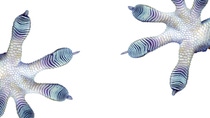Chi siamo
Nanotechnology – a science under discussion

For many years, nanotechnology has been considered a science of unlimited possibilities. These tiny particles and structures enable materials with exceptional properties to be produced. They can, for example, help to make plastics both lighter and more stable, or to make high-gloss coatings scratch-proof. They can also be used to develop new medicines. But, at the same time, there is some doubt. Critics see a risk that nanoparticles will get into human cells or the environment – and warn that there has not yet been sufficient research into this technology.
Nanotechnology - experts share their view
Professor Dr. Wolfgang M. Heckl, head of acatech, the topic network on nanotechnology of the German National Academy of Science and Engineering and Jurek Vengels, nano expert at BUND (Friends of the Earth Germany), discuss the pros and cons of nanotechnology.

